I have always been fascinated by how intensely people celebrate religion in some parts of Italy. Growing up in Rome, my childhood was full of obscure rituals that I didn’t understand at the time. I remember being surprised at people’s raw emotions, their sudden screams of joy and pain, their mysterious facial expressions that I could not translate. Religious rites in Italy are both an important part of our culture and a mystery for those who, like me, are not religious.
To document Holy Week, I drove through the region of Apulia, in Italy’s southeast, where people are still very attached to religious traditions. From its cities to small villages, I discovered that each place has its own peculiar way of celebrating the death and resurrection of Jesus Christ.
As the region becomes more and more popular with visitors, I wanted to show a different side from the images of beaches and quaint villages that have come to define the region to tourists. I decided to document the spiritual and the bizarre. Although the ceremonies are typically crowded, I isolated my subjects’ emotions in my documentation of secret religious ceremonies. I tried to see the celebrations as a child again.
I photographed blood and sweat; pilgrims that dress up in secret so as not be recognized, and women covered in black from head to toe. I visited attics and crypts home to mummies; I witnessed hands being punctured by nails, and crosses being dragged on the floor.
Easter time, it turns out, is when Apulia reveals its most mystical and disturbing side.
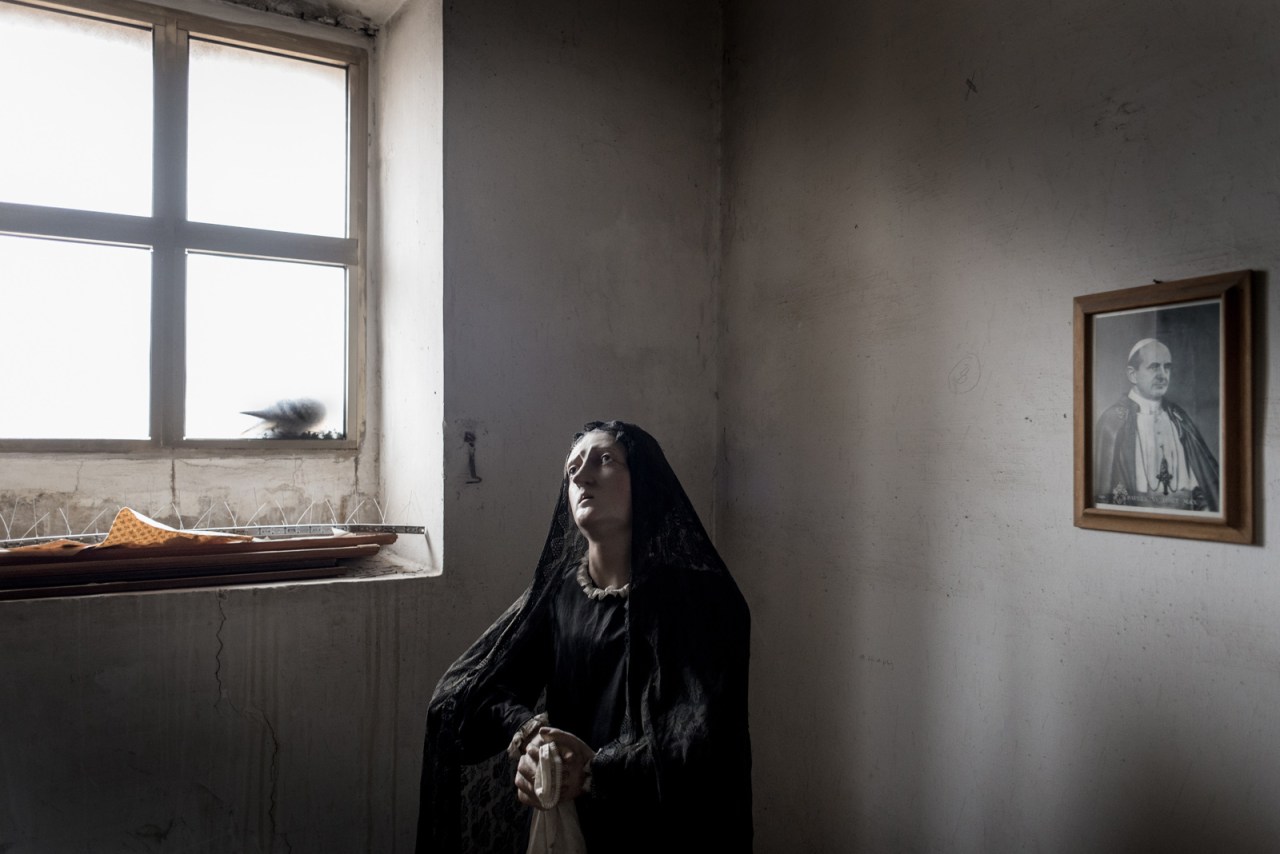
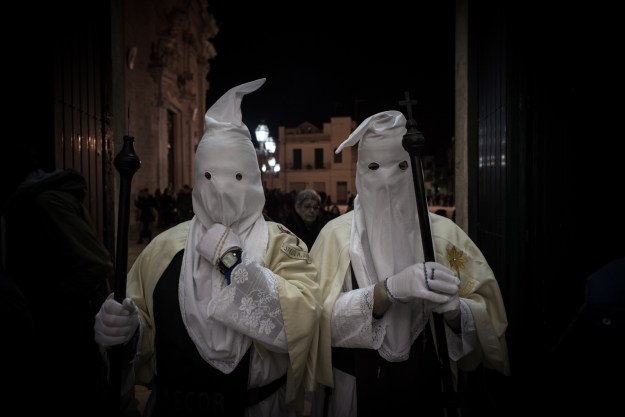
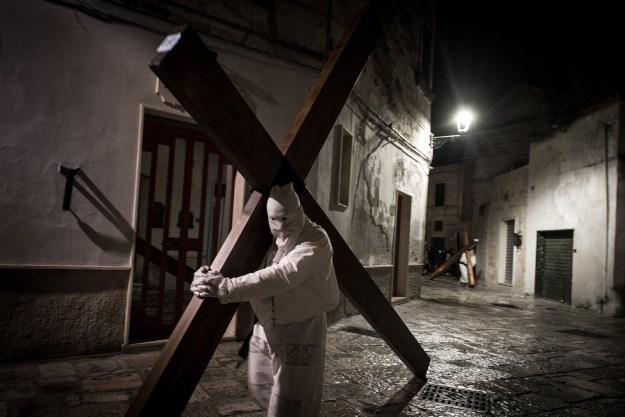

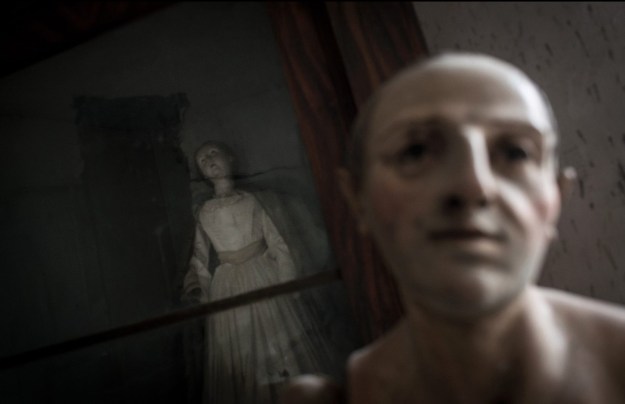
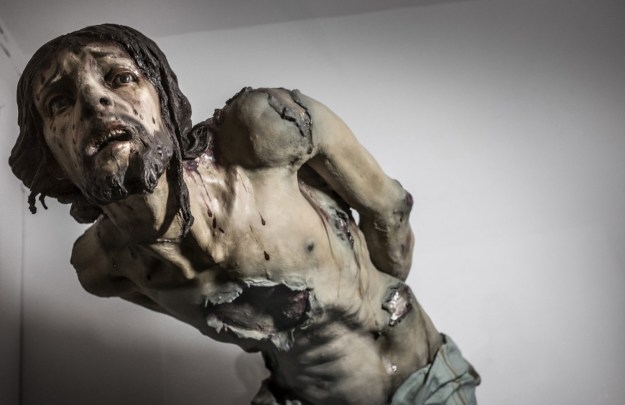
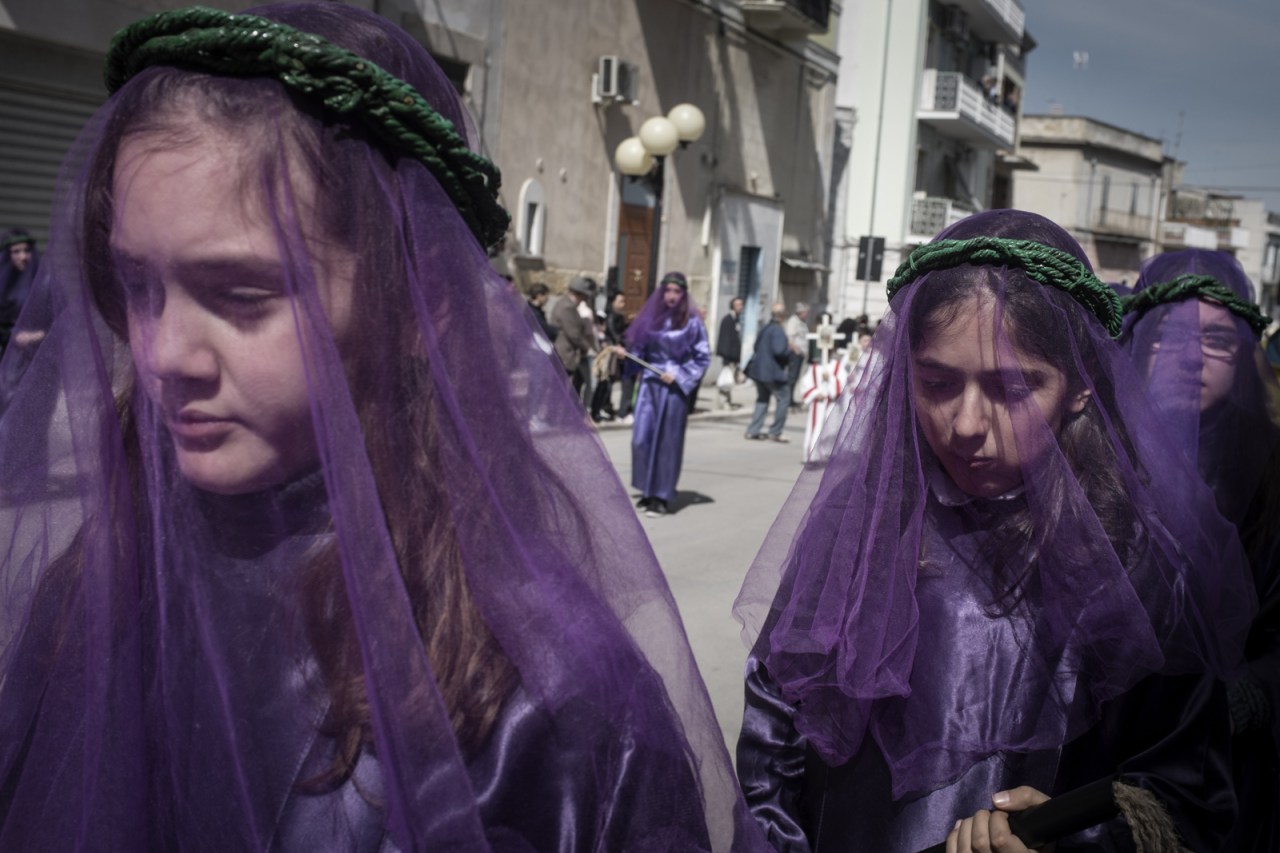


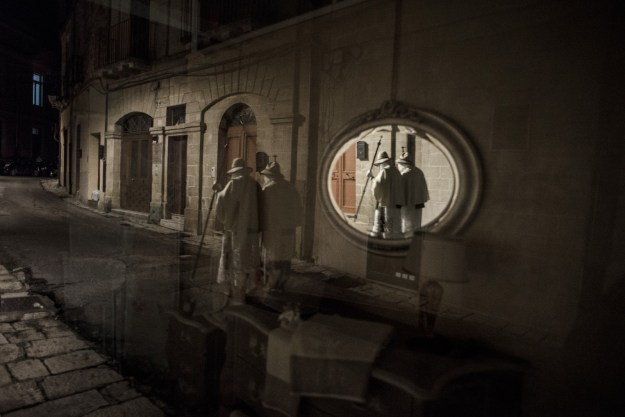
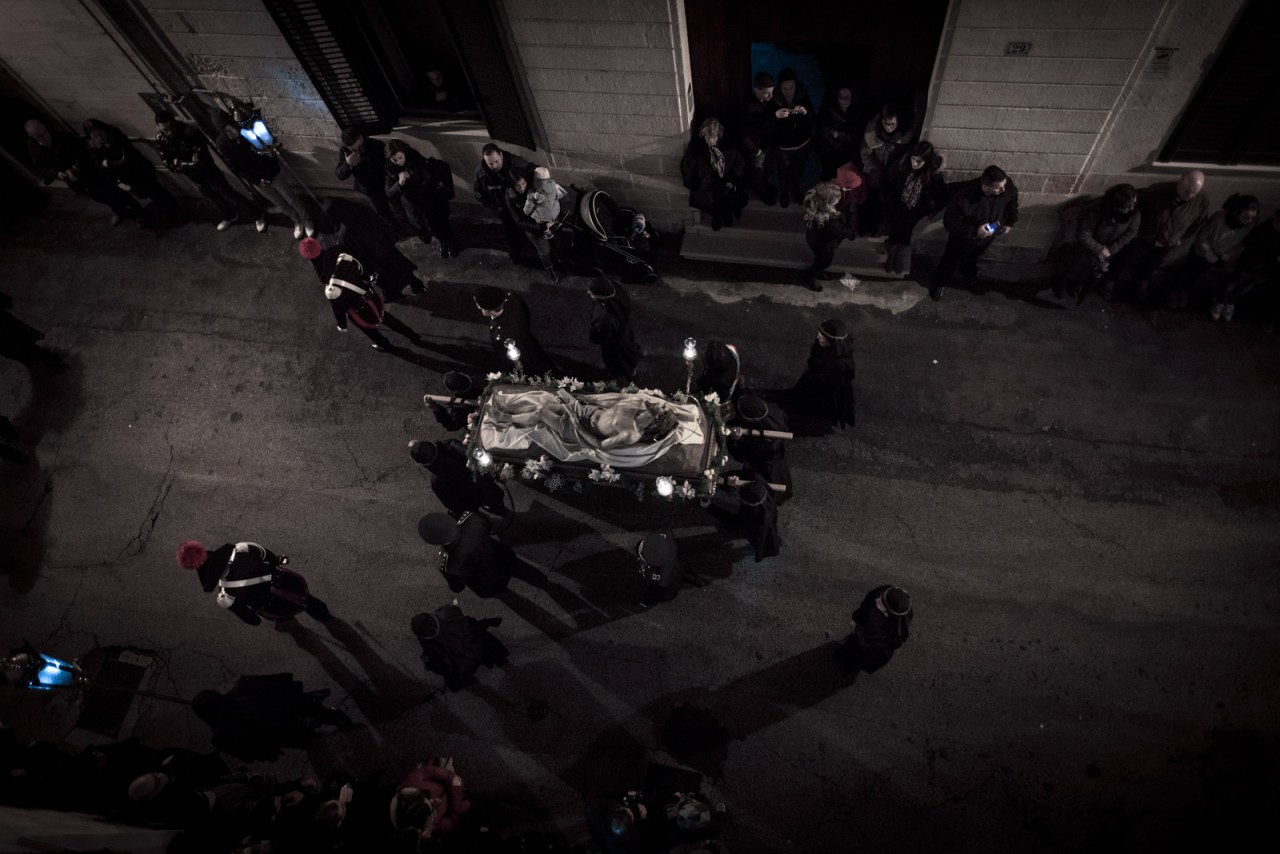
Originally published on Roads & Kingdoms on March 3, 2016.